- Homepage
- News and Features
- Face-to-face with Old Tom Morris' greenkeeping descendants
Face-to-face with Old Tom Morris' greenkeeping descendants
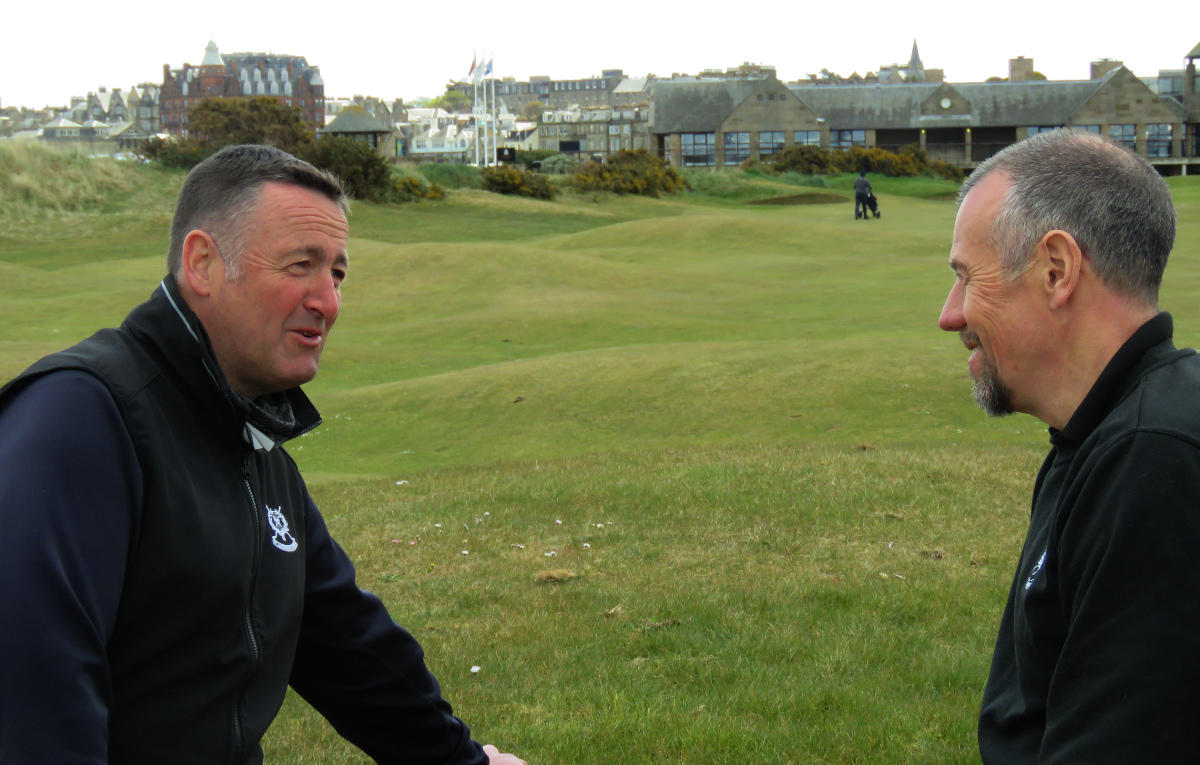
Gordon McKie is course manager on the Old Course, while Graeme Taylor looks after the New and the Jubilee. They’re directly responsible for managing the courses that Tom cared for throughout his later years.
GI: Old Tom Morris, the founder of modern greenkeeping, is sat in this room, what do you ask him?
Gordon McKie: The first thing I’d probably ask him is what do you think of the place?
His advice to us would probably be to just keep putting the sand on. He developed the philosophy of topdressing and the benefits of promoting the finer grasses.
I’m only the ninth head greenkeeper since Old Tom so we’re looking after history and we’re only here to nurture it and try to improve it a wee bit before passing it on to the next person. The links have been here for 600 years and will hopefully be here another 600 years, depending on what the sea wants to do.
The 11th green [High Hole, which caused Tom so many problems] sloped from front to back in the most exposed area of the site. The wind blows the back side of the green and if it’s 40 miles an hour on a smooth green, there’s nothing to hold on to the ball, so we’ve redone that to see if we can help ourselves out, but to date we’ve struggled. We’ve got to the point where the 11th pin may be on the 7th green and we’d push the 7th pin as far to the side as we could. There’s no separation between the greens so there’s nothing to say you couldn’t.
Things have got too good and we’re losing the fun element. It’s not about having fast greens, so long as they’re all the same. If the greens are running at 6ft then that’s up to you as a golfer to use your skill to adapt to that.
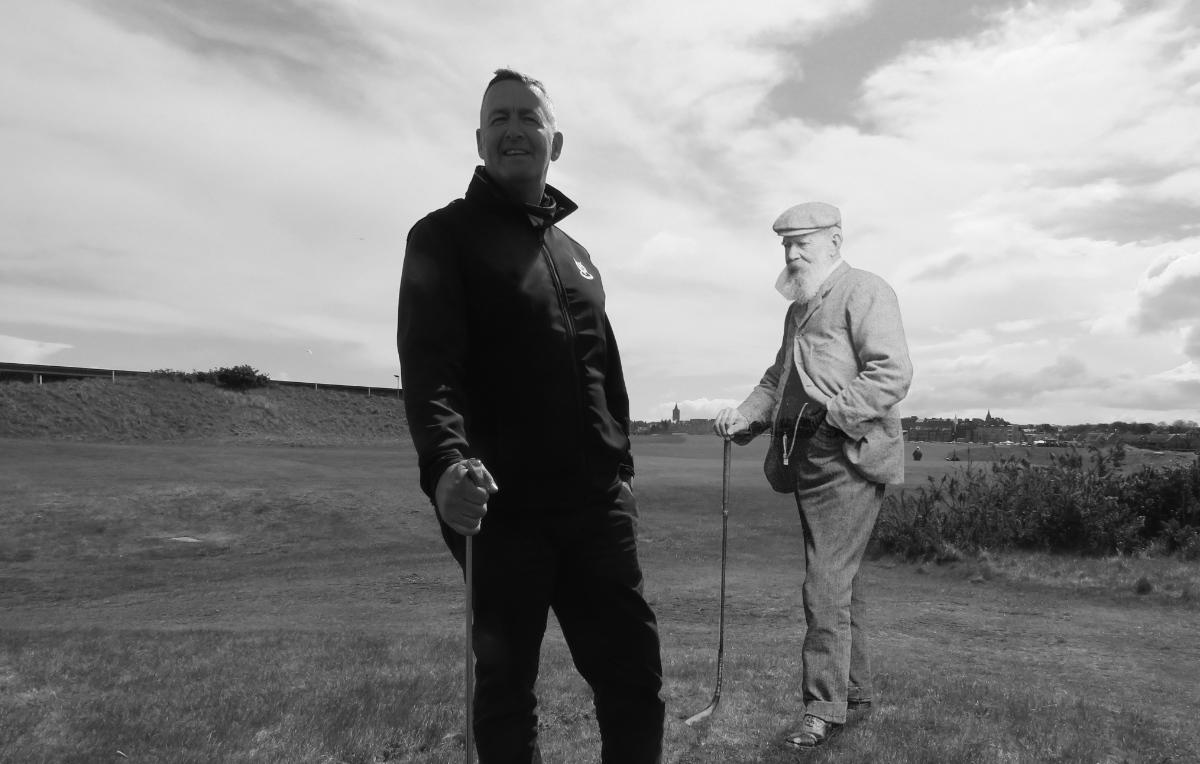
GI: Old Tom was certainly a figurehead in the industry. Do you see yourself as fulfilling that same role for today’s greenkeepers?
Graeme Taylor: Do we want to drive sustainability? Yes. Do we want to be seen as using fewer inputs? I would certainly want people to know about that.
GM: I changed the fleet of machines last year to include two fully electric machines. We also went to another six hybrid petrol machines and moved away from diesel. The technology that’s coming on to the market, we want that.
We took two electric machines as a trial and they’re working well. We’re working with Toro to see how much energy we are using and they are working with another company to look at the potential for solar energy to power our machines.
I realise that I’m just a custodian, trying to continue on the way Old Tom’s done it. Some of the philosophies that he’s done, we continue to do, such as sanding and producing finer grasses. Yes, the whole scope has changed and it’s nothing like what he would have had to deal with, but part of the role is maintaining the course in much the way as he did; we just have different technologies to allow us to do that and it’s a completely different ball game now.
GI: Tom also took a daily dip in the North Sea on a morning. If you’re filling his shoes, is that part of the role?
GM: You’ll be asking us next if we drink a glass of milk every day like Tom did! At the back of the 4th green there’s a bunker called Ginger Beer and that’s where old Daw Anderson would have his drinks cart, where you could get milk and ginger beer. So that’s another thing St Andrews invented, halfway houses.
GI: Tom was always innovative and is reportedly the first to use walk‑behind mowers on a golf course. Do you continue that ethos and what’s the next evolution, is it the use of robotic mowers at St Andrews?
GM: That will happen in our lifetime. After the year we’ve had, because we had to reduce our staffing numbers down to four, including myself, for most of last year, it changes your outlook on how you do things. It takes you back to how Tom would have done things and the standards he was achieving.
Over the years the standards on golf courses have become very excessive in terms of presentation. Last year that was taken away and we had to say ‘we can’t do this’. I’m now thinking, well we’ve not done it for a year, do we now have to do that particular task as frequently as we used to?
We’ve had this debate at Open Championship level among the managers at the various venues. You’re going » out every day and you’re mowing fairways, but what are we mowing? You’re mowing nothing, so is there a need to do it and is it sustainable?
One of the things we’re looking at ahead of next year is no pedestrian mowing and instead we’ll use triples to become more sustainable. Instead of having 25 people cutting greens, eight people will be able to do them.
People watch an Open and they see these things and it makes an impact. I’ve experienced going to a US Open and there’s 100 staff preparing the course each day and it looks absolutely fantastic, but most people are never going to be able to achieve that standard, so how sustainable is it?
In a way we’ve come full circle, back to Old Tom’s methods. We’ve built up and built up and I think we’re going to get to a stage where we’re going to drop back down, where staff numbers may drop and begin to even out. We definitely need to get more sustainable in our operations and not get hung up with how we’ve done things in the past.
Triple mowing our greens could be a big message because clubs may ask, if St Andrews are going to mow their greens for a Major tournament using only triples, why are we spending money on pedestrians or needing to find resources to put a body behind it?
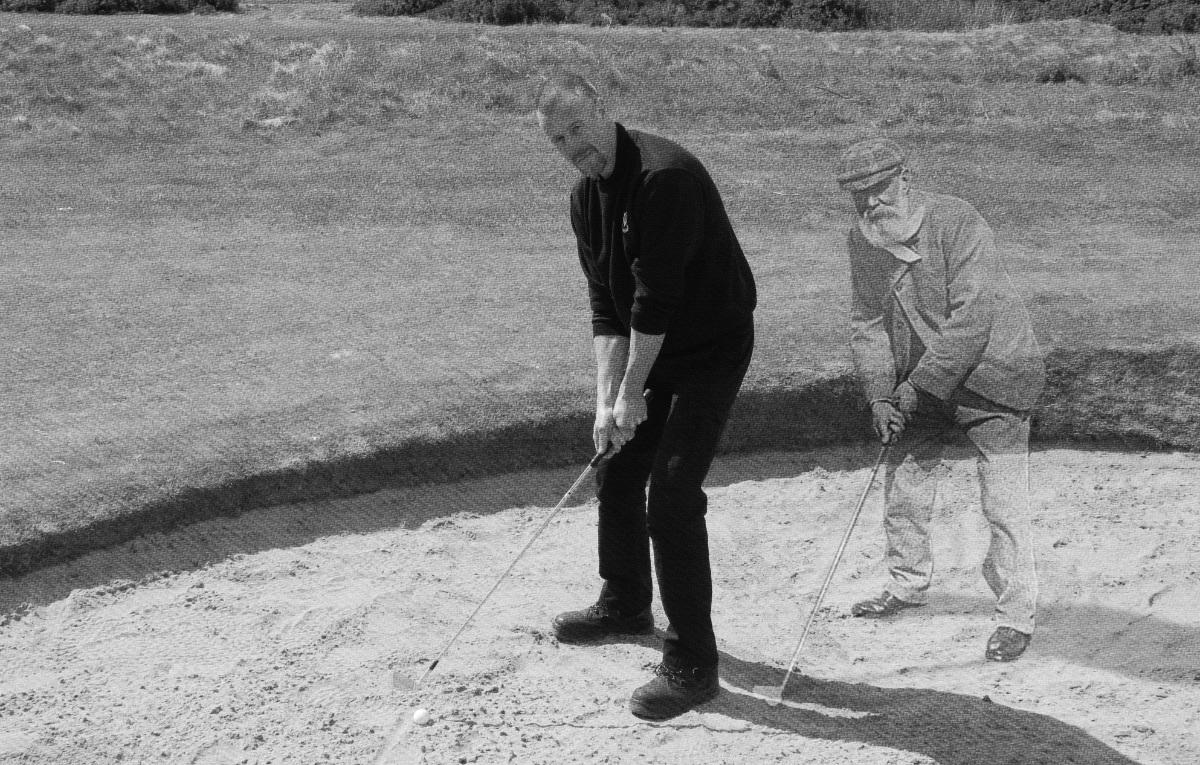
GI: With an increased drive towards sustainability, are you seeing increased pest damage?
GT: We do have worm casts in some areas and the Home end of the Old used to be pretty bad so we’ve been sanding a lot on there.
Leatherjackets are becoming more of a problem and I saw my first couple this week, but I don’t know how bad our situation is. We do tolerate a certain level of damage before we act, the same with disease. We let it run a little bit, reach a threshold and then we’ll consider doing something. Don’t make the mistake of thinking they’re perfect out there. Leatherjackets haven’t been a major problem yet but clubs down south are getting decimated, so it’s heart‑breaking what they’re going through.
GM: We have to be sustainable in all we do. In the past we’ve had to spray chemicals, but there’s a way to do it. It’s very rare we’ll spray and last year I took advantage of it being a pandemic and sprayed one green twice because we had issues with pearlwort in the grass. The only way to get rid of it is to chemically treat it. It’s all impacted by the pressure on presentation and heights of cut. In Old Tom’s day your height of cut was nowhere near as he had sheep chewing away at it. Are we now cutting too low and that’s putting pressure on the grass, which is getting weaker and causing the weed to come through? You go a foot into the semi rough and you barely get any weed problems because the grass is longer and stronger.
The pressures we put the grass under because of the expectation levels create another problem that you have to effectively manage.
I’ve seen the greens in the 1960s, when the height of cut was so high and the greens were so slow; they were using cylinder mowers and I imagine they never had any of the issues we have now.
GI: When your greens are as undulating as they are, how do you ensure the grass is mown uniformly?
GM: The floating heads achieve that today. We look after the Himalayas [St Andrews Ladies’ Putting Club] and even going back a couple of models ago, the 3250 just wouldn’t flow and it caused issues. This season we’re using our new machines and what a difference the new technology has made. But grass species and height of cut also comes into that. There were some guys visiting us from a putting green in the area and they said they were struggling to keep grass on their green. I asked them what height they were cutting at and they said 2mm. That was why they had problems, there’s no way high spots can sustain that length of cut. We cut the Himalayas at 6.5mm all the way across and you couldn’t go much lower because that would stress out the tops. Having the correct species of grass – the fescues and bents – helps you with that as well.
GT: We have so many undulations that if you tried to put the green at 10ft, how would you stimp it? That’s a problem for so many of the greens out there, that there are not enough spots where you can actually measure speed. We’re able to set our own heights of cut and it will be between 4mm and 6mm depending on the time of year. Our target speeds are between 8.5 and 9.5ft.
GM: We’re always questioning why we’re doing things. I know there’s a question of standard, presentation and visual image, but how sustainable is it? The last couple of days we’ve been discussing our own tournaments and whether we cut everything or go for a really relaxed set up? Do we only cut the greens, rake the bunkers and move the holes, instead of having the whole team in, cutting fairways? That’s all come out the back of the pandemic, having to change the way we do things. I don’t think we’d get away » with that for an Open Championship, but perhaps on a lesser scale. We’ve reduced the number of staff we have doing bits and pieces and we don’t full rake bunkers any more at weekends.
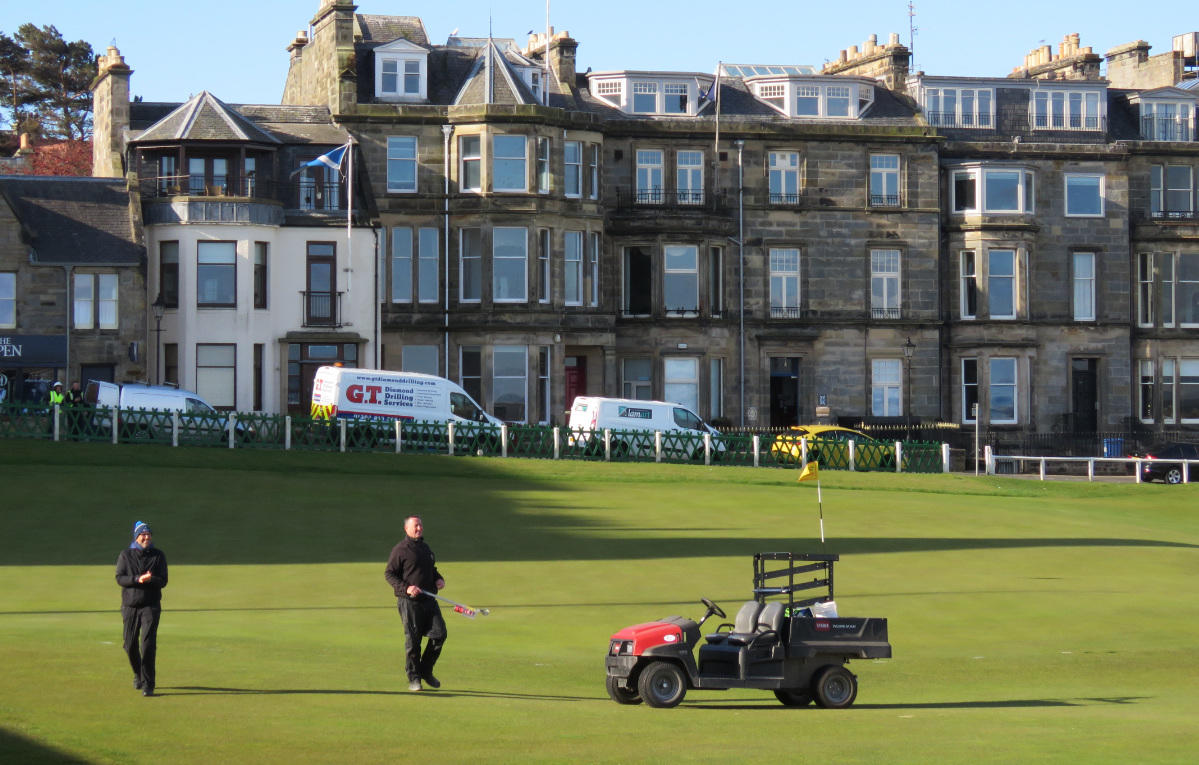
GI: St Andrews’ double greens are a feature instituted by Old Tom. What are the positives and negatives of these unusual features?
GT: You have to do whatever you need to quickly. I’ve only one double green on each of the New and the Jubilee and you have to make sure you get them cut early because if we try in the afternoon when there’s two sets of golf coming into the green, there’s no break and you can’t get work finished.
GM: There aren’t many positives. One of the biggest headaches is the size and how you manage them. It takes a lot of resources to treat them, for example I’ve got 2.5 hectares of greens compared to Graeme’s 1 hectare. It’s a huge budgetary drain. The greens are huge but there aren’t many pinnable areas, hence why we’ve been around this morning looking to extend the size of the greens, to try and create more pin positions.
For The Open next year, our main philosophy is going to be to make the rough as thick as we can. We’ve spoken to [R&A Chief Executive] Martin Slumbers and on the first we’re considering where the grandstand behind the green will be because he thinks somebody is going to go for it. DeChambeau is probably going to stand on the first and think, ‘let’s have a go’. So how do we toughen that hole up?
But then again, you can flip things and people want to see an exciting game. The game’s at a point where it has a very ageing demographic, so how do you make it exciting to get kids into it? You want to see birdies and eagles, which make it exciting. You don’t want to see someone winning with 18 pars, that’s boring.
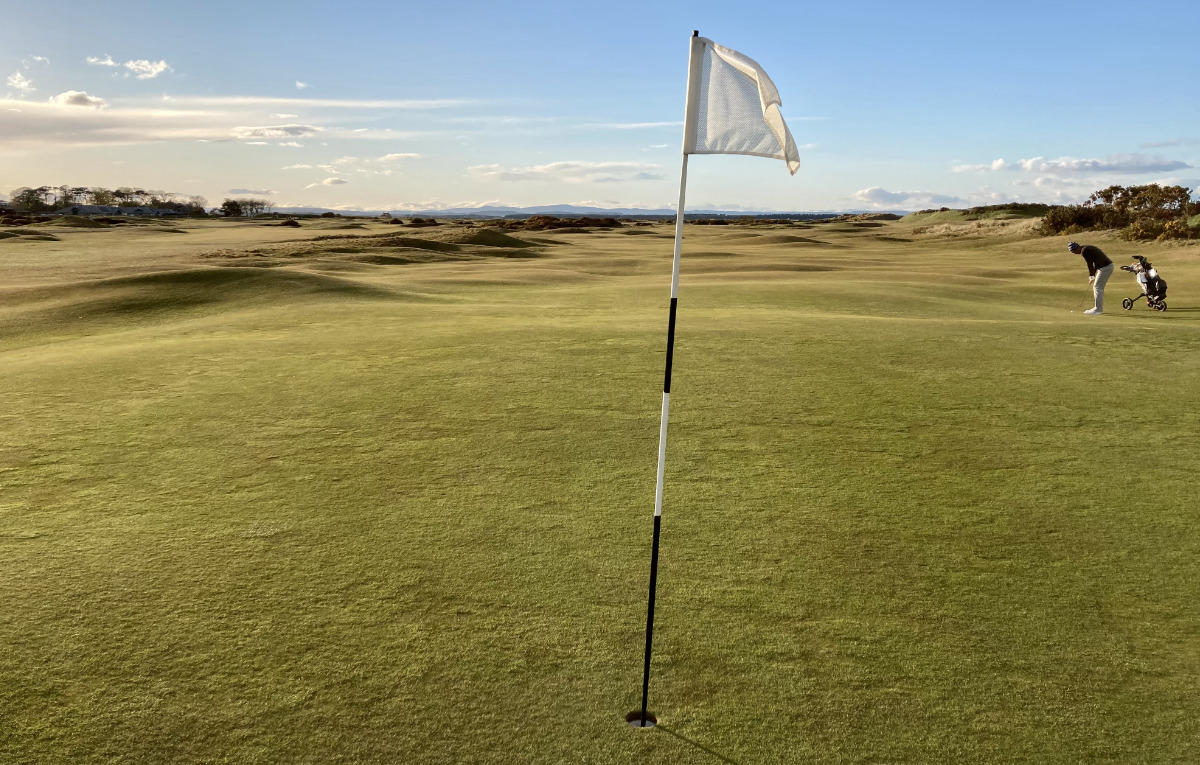
GI: Old Tom said the High Hole (11th on the Old) was his least favourite – which is yours and why?
GM: For me that’s a very difficult question because I look after Old Tom’s jewel and it’s the home of golf, where everyone around the world wants to come and play.
GT: I would love to have seen the links with no maintenance roads through them as it would have been quite special with all the links rolling into each other. At the moment each course is defined by the maintenance road and to see it as just one big golfing land would be quite special.
GM: But you’d have no vehicles then.
GT: Yeah, you’d have to walk everywhere and be fit!
GM: One of the unique challenges we have is managing the grass and over the years we’ve had to change our philosophy. That’s probably one of the things, when Old Tom’s looking down, wondering how you do things now, thinking ‘I wouldnay be doing that’, but the game's changed, the number of players, the wear patterns, the machinery used, technology has changed in terms of grass species and we’ve potentially come away from using finer grasses close to greens and are using more ryegrasses just so we can keep grass cover. A lot of things have changed.
Over the last year if you asked me what the biggest thing I’ve noticed is, it’s that our greens have got better agronomically. Out there we’ve got some of the best grasses I’ve seen on links greens and they’ve just flourished in the last 18 months because we don’t have the same foot traffic.
Looking for something to read next?
Author

Karl Hansell
Karl has been head of communications for BIGGA since March 2016. His duties include editing the monthly Greenkeeper International magazine, in addition to other communications activities for the association.
